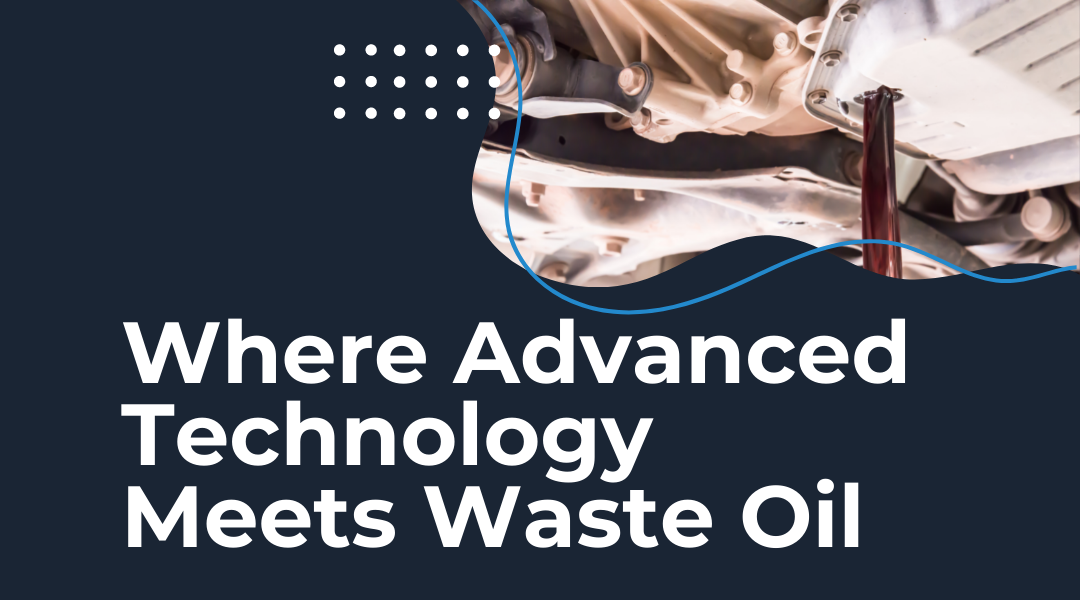One of UOMA’s goals is to support the advancement of technology used to recycle and reuse waste oil. Most of UOMA’s members have developed or implemented waste-oil heater and boiler technology specifically. The process of creating and implementing new technologies leads to the improvement of current efficiencies, streamlined and refined offerings for different situations and industries, and investment in the continued development of new solutions. Through these actions, UOMA and its members are reducing costs for consumers and making it easier to capture the value of waste oil where it is produced.
The Internet of Things (IoT) and new technologies on the market are making it easier for UOMA members to enhance their offerings. Some of the tech advancements most recently incorporated into waste oil heaters and boilers have come about by solving for real-time challenges with different clients. Each business that wishes to use a waste oil heater or boiler requires a different solution depending on the location, space configuration, and waste-oil storage needs, making change a constant. Through their many innovations, UOMA and its members are iterating and developing better solutions, a few of which are outlined below.
Mobile and Web-Based Controls
More recently, those using waste oil heaters and boilers have been asking for remote or web-based controls and greater diversity in the existing set of wireless controls. To meet the changing demands of a growing customer base, UOMA member teams began incorporating more tech-forward solutions in the design and development of the suite of waste oil heaters and boilers.
Wi-Fi-enabled thermostat for remote system controls, monitoring, and alerts.
If you have access to an internet connection, you can access the system controls. This provides unlimited connectivity when clients need it. Using the Honeywell Total Connect Comfort web or mobile app, any system owner can securely and quickly access the controls from anywhere in the world. Even more convenient, users can set alerts in the app. You can choose to receive notifications if the heater increases beyond pre-set temperature thresholds or the heater loses power. The need for additional batteries also has been eliminated. A 24V AC-DC transformer is linked to the heater’s existing connection and provides reliable power to the thermostat.
Creating the Wi-Fi thermostat has been a great advancement for many customers. With the remote control, you get:
- Increased control, flexibility, and peace of mind regarding the everyday functions of your waste oil burning systems.
- The ability to turn on the heater from your home before you arrive at the shop during the dead of winter.
- Improved monitoring of the system when you spend time away from the location.
- Simplified user experience
Supply Level Reporting for Tanks
Some businesses may purchase one waste oil heater or boiler. Other businesses might have multiple boilers at multiple locations and just one person to manage all the devices. This can make it challenging to monitor tank levels at each site and keep an accurate record. To help manage tank levels, one of UOMA’s members is using the SmartBin remote tank monitor.
The sensor-based technology, SmartBin, remotely monitors the tank and sends information from each tank back to the database. Users than receive regular emails reporting the levels in each owned tank regardless of their location or proximity to the tank. SmartBin takes a previous early warning system to the next level. What this means is that owners can now stay in the know about fuel supplies, whether it be a surplus or low supply. Finally, this systems allows users to create a strong waste oil management strategy using routine reports from all remote tanks.
Smart-Boiler with Microprocessor
The next generation of waste oil boilers come complete with a microprocessor, boiler control system. Depending on the manufacturer, the system may feature an easy-to-use LCD display and push-button keypad to simplify the operation of the waste oil boiler. One of UOMA’s partners, created the AquaSmart™ system. By enabling the automated HeatManager™, the system senses conditions in the environment to conserve up to 20% of fuel through dynamic temperature reset. Not only that, AquaSmart provides memory storage so you can track how the unit is running and perform diagnostics that make troubleshooting a breeze.
Whether it’s a remote, web-based control or an easy-to-use microprocessor for your waste-oil boiler, advancements in technology are positively impacting the recycling and reusing of waste oil. UOMA and its members hope to continue pushing the boundaries of what is possible for waste oil use and listening to clients in the hopes of creating, better, more streamlined devices to capture the value of waste oil. Contact UOMA today!

